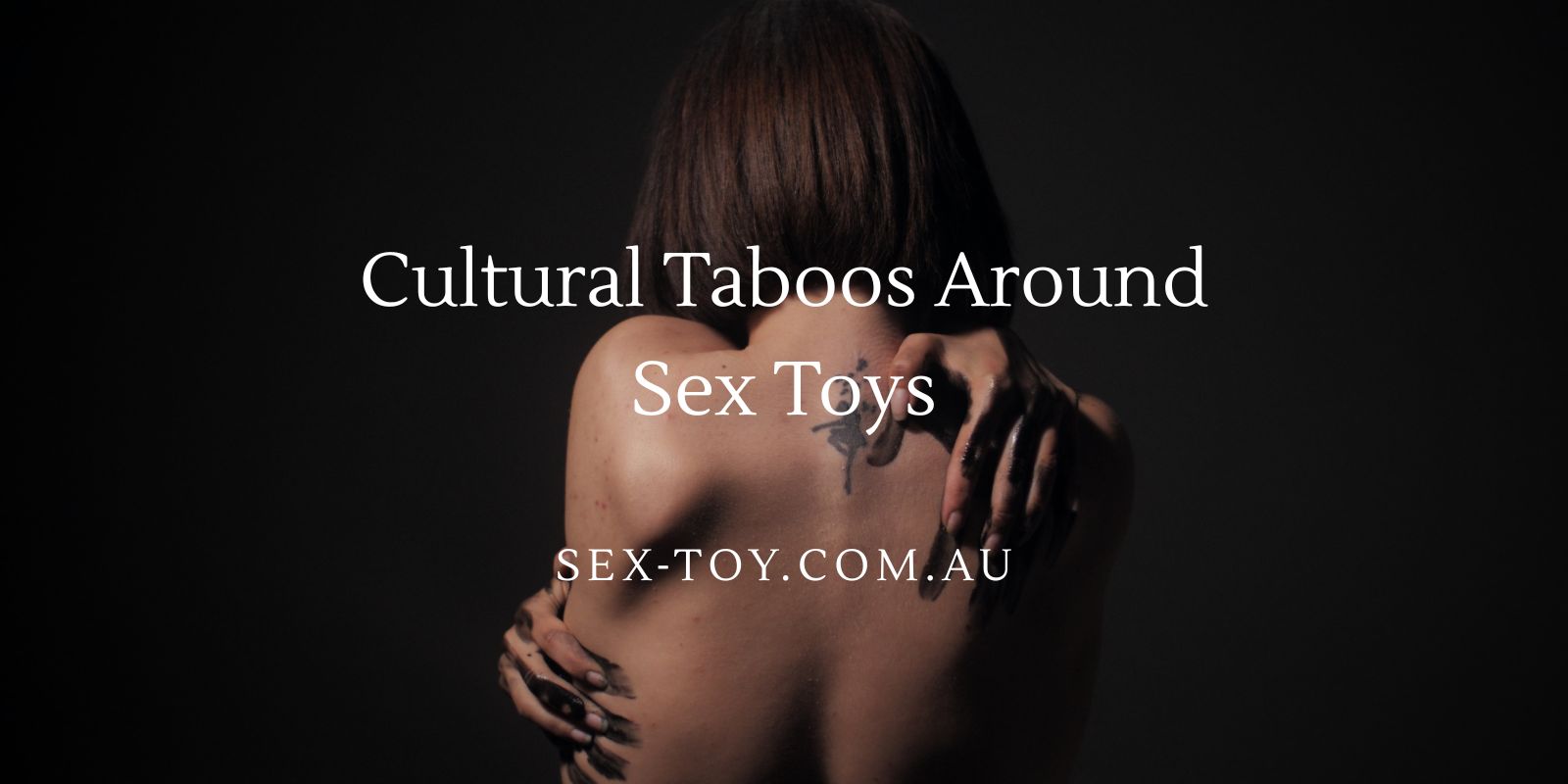Why Is There Cultural Taboos Around Sex Toys? How Society Shapes Pleasure and Perception
Cultural Taboos Around Sex Toys have existed for centuries, reinforced by religion, social structure, and silence. In many places, pleasure is still viewed as indulgent or immoral, even though sexual wellness is part of overall health. People grow up believing that masturbation or using a toy is shameful — not because it harms them, but because culture told them to hide it.
Today, open discussion and education are challenging that stigma. From podcasts to sex educators and online retailers, a quiet revolution is taking place. This article looks at how cultural and religious ideas built the taboo, how modern views are shifting, and what education can do to make sexual wellness a natural, healthy part of life.
Table of Contents – Cultural Taboos Around Sex Toys
- Understanding Cultural Taboos Around Sex Toys
- Religious and Social Influence on Sex Toy Taboos
- Modern Acceptance and Changing Views on Sex Toy Culture
- Breaking Cultural Sex Toy Taboos Through Education and Access
- The Future of Sex Toy Acceptance and Cultural Change
- Key Takeaways
- FAQs
Understanding Cultural Taboos Around Sex Toys
Cultural Taboos Around Sex Toys come from deep social conditioning. In many communities, pleasure is private and strictly tied to reproduction or marriage. Even today, speaking openly about self-pleasure can feel rebellious. The topic sits quietly between curiosity and guilt, where silence seems safer than honesty.
Historically, these taboos formed to control behavior, not protect health. They were built to maintain modesty, social order, and power over sexual knowledge. The result? Generations of people who don’t know how to talk about pleasure without fear or shame. A sex toy — something designed for comfort or exploration — is still viewed by many as dirty or immoral, depending on where they live.
Yet, access to information is slowly breaking that pattern. As people learn more about anatomy and wellness, the mystery fades. For a factual overview of what sex toys are and how they’ve evolved, see Wikipedia’s article on sex toys. Understanding history helps show that Cultural Taboos Around Sex Toys are social myths — not moral truths.
Religious and Social Influence on Sex Toy Taboos
Religion has always shaped how people talk about sex. In many belief systems, pleasure without purpose is seen as weakness or sin. These teachings, while often meant to guide moral behavior, also limit open discussion about health and desire. Even in modern times, sermons and traditional values reinforce silence, suggesting that sexual curiosity is shameful.
Social influence makes these restrictions even stronger. Cultural Taboos Around Sex Toys are often enforced through gossip, family shame, and double standards. Women and queer people face heavier judgment than men, while men are often taught to hide emotions tied to vulnerability or touch. These attitudes stop people from exploring safe, healthy ways to connect with their own bodies.
Modern research shows how social image outweighs logic when it comes to taboo. One study on ScienceDirect found that sex toys for women were still seen by some as “encouraging indecent behavior.” This reflects how moral control often overshadows health and autonomy. Cultural Taboos Around Sex Toys persist not because they’re true, but because they’re taught — and repeated — without question.
Modern Acceptance and Changing Views on Sex Toy Culture
The rise of sexual wellness brands, inclusive education, and online spaces has begun to soften Cultural Taboos Around Sex Toys. In many Western countries, adult stores are now marketed like health shops, with bright lighting and approachable branding. The shift from secrecy to self-care reframes toys as tools for stress relief, body confidence, and relationship enhancement.
Social media has played a big part in this change. Creators talk openly about sex positivity, consent, and toy safety, showing that pleasure can coexist with emotional intelligence and self-respect. Conversations once considered taboo are now part of mainstream wellness discussions, often tied to topics like mental health and empowerment. This normalization encourages exploration without shame.
When I first started reviewing products, I was nervous about being open. Talking about vibrators and couples’ toys felt risky, even online. But once I saw readers responding with gratitude instead of judgment, I realized how many people had been waiting for someone to speak honestly. Every review, every test, every awkward sentence helped chip away at the silence that keeps pleasure in the dark.
Breaking Cultural Sex Toy Taboos Through Education and Access
Education is the strongest tool against Cultural Taboos Around Sex Toys. When people understand anatomy, consent, and body safety, shame loses its hold. Proper information replaces myth with fact — explaining that pleasure is not indulgence, it’s biology. Modern sex education programs now include topics like lubricant safety, hygiene, and emotional awareness, bridging the gap between curiosity and confidence.
Access also plays a key role. Affordable, safe products give people options beyond risky or untested alternatives. Hygiene and maintenance are equally important. Clean toys last longer, prevent infections, and promote safer intimacy. For step-by-step guidance, check Clean Your Sex Toys, a detailed guide on maintenance and care. For readers navigating hormonal changes or body adjustments, Sex Toys for Hormone Therapy You Need to Try explores how products can support physical comfort during transition or recovery.
Open access to quality information empowers people to take control of their own bodies. Once sexual education becomes common and honest, Cultural Taboos Around Sex Toys lose their authority, and pleasure becomes part of a larger conversation about health and identity.
The Future of Sex Toy Acceptance and Cultural Change
The next decade will likely see even more open discussion about pleasure and self-care. As global attitudes evolve, sex toys are becoming recognized as wellness tools rather than secret indulgences. Public health campaigns, online communities, and inclusive brands are redefining pleasure as a normal aspect of self-expression — no different from skincare or fitness. The stigma once linked to shame is being replaced by curiosity and learning.
Still, Cultural Taboos Around Sex Toys won’t disappear overnight. Resistance remains in countries where sex is tied to moral control or limited access. But every open conversation, blog post, and honest review helps move the line forward. By combining education, empathy, and representation, the world is slowly making room for pleasure to be seen as both healthy and human.

Key Takeaways
- Cultural Taboos Around Sex Toys come from history, religion, and silence—not science or health facts.
- Shame about pleasure limits open talk, safe use, and body awareness worldwide.
- Education, access, and honest product reviews help normalize self-care and reduce stigma.
- Modern sex toy discussions now focus on wellbeing, safety, and emotional confidence.
- Breaking taboos takes time, but awareness and open conversation continue to shift attitudes globally.
FAQs – Cultural Taboos Around Sex Toys
Q1. Why are sex toys considered taboo in many cultures?
They’re often linked to moral or religious values that define pleasure as private or sinful. Many people learn these beliefs early and carry them into adulthood, even when attitudes start to change.
Q2. How does religion influence sexual stigma?
Most major faiths promote restraint and traditional family values. While not all discourage pleasure, religious interpretations can create guilt and fear around solo or same-sex desire.
Q3. Are sex toys becoming more accepted globally?
Yes. Social media, education, and sexual wellness brands have made conversations about toys more open. Younger generations now see them as part of personal health and self-expression.
Q4. How can education change public opinion?
Accurate education replaces myths with facts. When people learn about anatomy, safety, and consent, sex toys are seen as tools for wellbeing instead of shameful indulgences.
Q5. What does the future of sexual openness look like?
It’s heading toward inclusivity, honesty, and science-based education. The more people talk about pleasure responsibly, the weaker Cultural Taboos Around Sex Toys become over time.

Risetob is a sex toy reviewer sharing honest, detailed insights to help readers choose products that feel good, work well, and are worth the money.



Leave a Reply